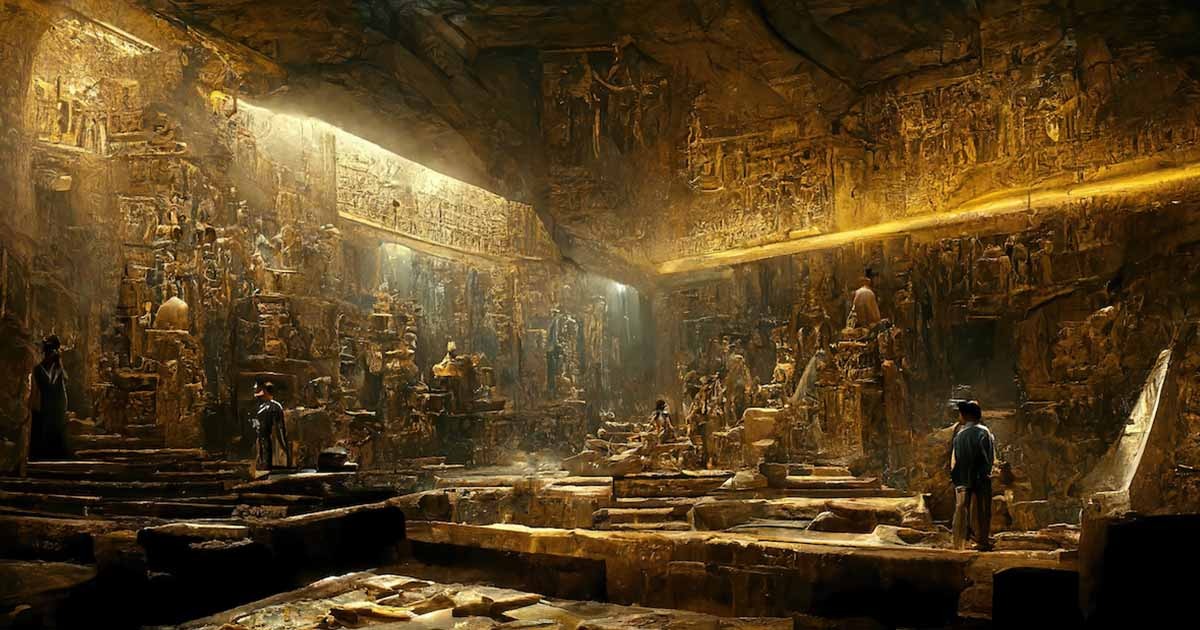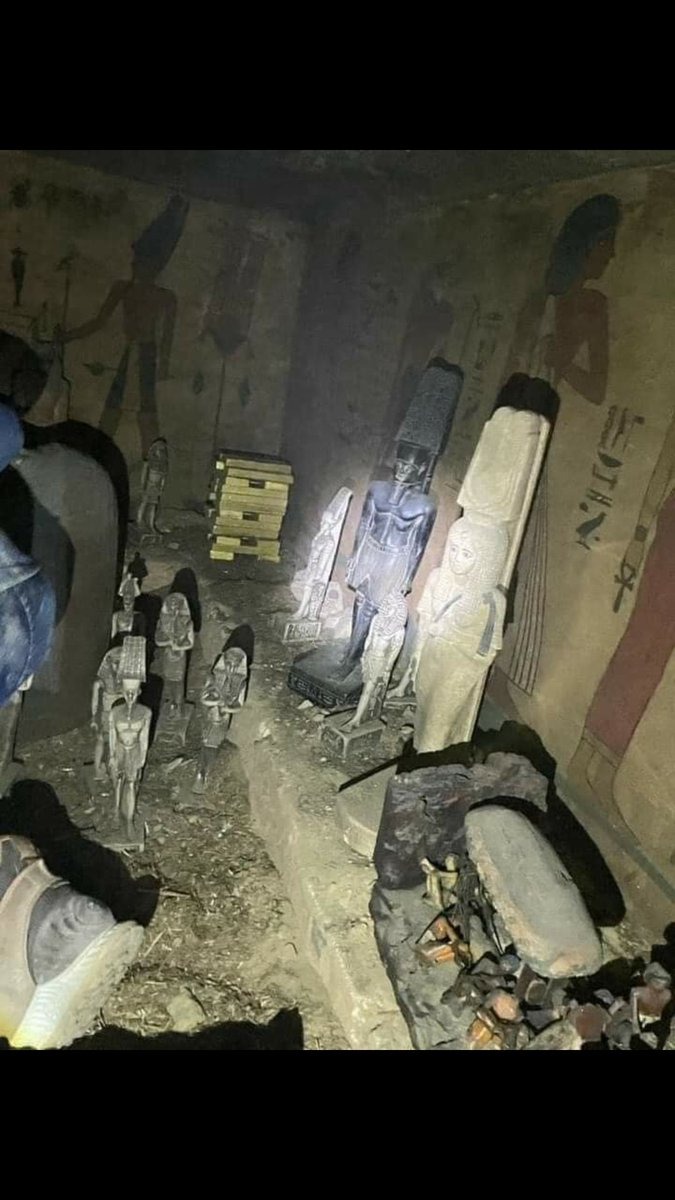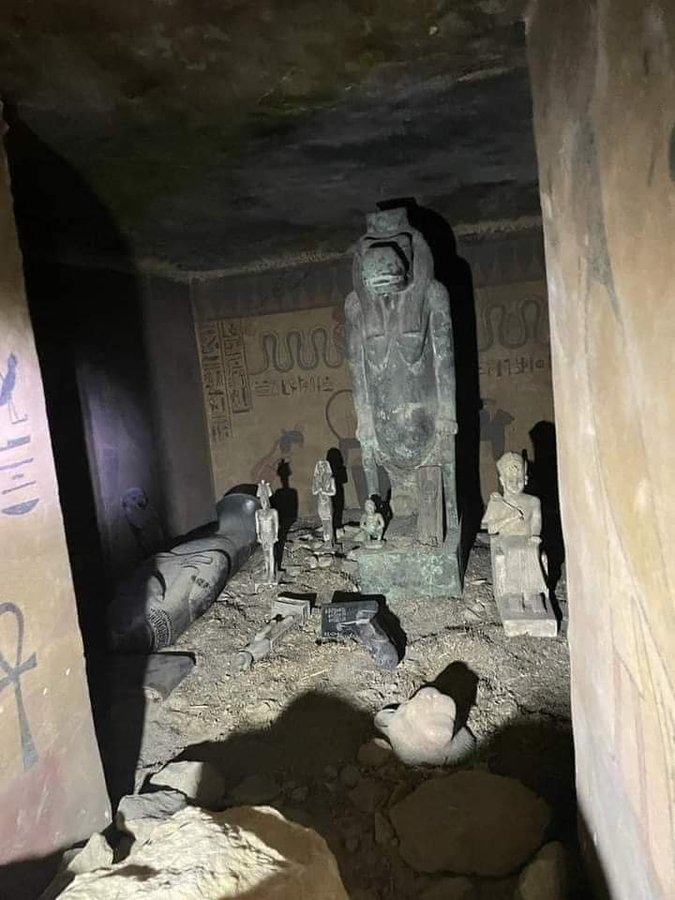
Egypt’s Public Prosecution office just issued an arrest warrant for a group of crafty criminals who cooked up an ingenious scheme to swindle antiquities traffickers. These daring fraudsters went all out to create a convincing fake Egyptian tomb that almost had everyone fooled. It was nearly a legendary hoax.
According to a statement released on February 17th, law enforcement officers attempted to question a suspicious group of men in a pickup truck on February 15th. The daring crooks were caught red-handed on a hillside in a desert area just outside the historic town of El Hibeh. But, just like a scene from an action movie, the gang of suspects made a mad dash and managed to escape before they could be caught.


The Art of Building a Fake Egyptian Tomb in an Ancient Stronghold
Located in the Beni Suef governorate, about 178 kilometers (110.60 miles) south of Cairo, the ancient Egyptian city of El Hibeh, also known as Teudjoi, El Hiba or Tayu-djayet (meaning “our walls”), was located at the northern boundary of the Theban rulers. The city’s strategic location on the Nile passage to the south made it a crucial point of defense within ancient Egypt .
The large enclosure wall at El Hibeh was most likely constructed during the 20th Dynasty (around 1080 BC to 1074 BC) by the High Priest Herihor, under the reign pharaoh Ramesses XI. The city served as a vital fortified settlement during the Third Intermediate Period (1070 BC to 712 BC) with its military and religious importance increasing over time.
El Hibeh was enhanced with additional fortifications that were constructed by army commanders and priests of Amun, while the pharaoh Sheshonq I constructed a temple dedicated to the god Amun within the city. It was here that criminals crafted a fake tomb to delude artifact criminals.
When Fraudsters Are Defrauded: The Tale of the Fake Egyptian Tomb
Egypt’s Public Prosecution office oversees the application of the law across the country, prosecuting crimes, investigating criminal cases and bringing cases to trial. Additionally, the Public Prosecution office provides legal advice to government agencies and officials and represents the state in civil litigation. It therefore plays a critical role in upholding the rule of law in Egypt, especially when it comes to artifact and heritage crimes.
Police inspected the fake Egyptian tomb at El Hibeh, treating it as a crime scene. Inside, they found several ancient-looking statues scattered around a 2-meter-deep (6.56 ft) hole, secured by a bolted metal gate. Further investigation revealed three chambers with additional statues.
Archaeologists from the Ministry of Tourism and Antiquities examined the site and concluded that the statues and inscriptions in the three chambers of the fake Egyptian tomb were modern creations, not antiquities. The investigators believe that the suspects fabricated the tomb as part of their plot to scam antiquities traffickers.
According to Egypt Independent , the Antiquities Investigation Department have identified a group of suspects in the bizarre case of this fake Egyptian tomb. The Public Prosecution has issued an arrest warrant and investigators are hot on the trail. It’s like a real-life version of Indiana Jones.
Fake Egyptian Tomb is Just Latest Chapter in Local Criminal Saga
Egypt is a country with an exceptionally rich history, and as a result, it houses numerous valuable artifacts and antiquities. Unfortunately, over the years, many of these artifacts have been looted and smuggled out of the country, where they enter the international black market and private collections.
In 2018, Egyptian police in the same governorate made a major bust when they nabbed two antiquities traffickers in possession of a huge cache of ancient Egyptian artifacts. Among the treasures were 5,450 Greco-Roman coins, sarcophagi, gold statues and busts, and ushabti statues , as described by Ahram.
Mermaid Mummy at Japan Temple Exposed as Gruesome Man-Made Hoax
‘On the Verge’ of Finding $20 Billion Lemminkäinen Hoard. Or Are They?
Stolen artifacts in Egypt include everything from small pieces of jewelry to massive statues and intricate frescoes. On January 28, 2011, during the height of the Egyptian Revolution , several archaeological sites were looted, including the Egyptian Museum in Tahrir Square .
During the looting, a group of thieves broke into the museum and stole 54 items, including gold and bronze statues, precious jewelry and other priceless antiquities. Among the items stolen was the famous statue of King Tutankhamun , which had been part of a collection of artifacts discovered in the boy king’s tomb in the Valley of the Kings in 1922.

Leave a Reply